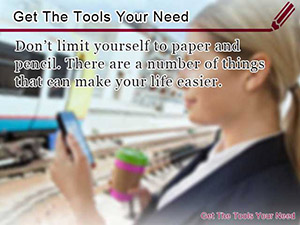When choosing the right diet, it is hard to discern between diet fads and something that is going to actually help you lose weight. More often is it the case that most diets out there aren't what celebrities make them out too be. While dieting it is easy to feel as if you've lost control, following strict dietary menus and exercise regimen. This is where a lot of diets fail, making it hard to continue looking for areas to improve.
In this column, we are going to introduce diet that gives control back to you, the recording diet made popular in Japan by Toshio Okada's best selling book titled, “Sayonara, Mr. Fatty!: A Geek's Diet Memoir." See how just by recording the food you eat can be an indispensable technique leading to your diets success. Okada lost 110 lbs in a year just by writing in his notebook! You may be wondering how he did it. So, let's dive into recording diet and see how it actually works.
What exactly is the recording diet, anyway?
All the recording diet has you do is simply write down the stuff you actually eat along with calorie intake. It's easy to get started than most diets. All you're going to need is a notebook are any other device in that manner, i.e. table pc, iPhone, ect.
“Is this really all you will be needing?" you may be asking. Yes for now, the rest will come later.
As you write, you become more conscious of what you are putting in your body
As you record you daily eating habits, you naturally become more aware of your diet. Through shear repetition, you are more likely to take notice when eating in excess. In turn, as much as you would not like to admit, knowing that your calorie intake is too high becomes apparent. That is why as your diet awareness increases, so does the possibility of incorporating more balanced meals into your diet. The fact that your eating habits have been recorded makes it possible to look back and make adjustments along the way. This goes to say that you build a stronger diet core less prone to failure and more likely to continue indefinitely.
You become aware of how much calories your food contains
Have you ever found yourself counting calories? As much as eating the foods you like sounds, there are situation that with a little work you can calorie-down your diet. For example, when you are at the grocery store shopping for yogurt, depending on which brand you buy the amount of calories may differ substantially, as much as 100 calories. Over time these calories add up. Cutting a little calories here and there can make a difference when deciding to treat yourself. This is calorie counting in a nutshell. It's like putting money in a piggy bank with calories.
By recording which food you eat along with their associated calories, you become more adept to calorie counting and more likely to discern from unnecessarily high calorie alternatives, calorie smarts.
Do you know how to check calories in foods?
In a nutshell, this is how you go about the recording diet
It doesn't matter what diet you are on, just going through the motions isn't going to cut it! Luckily enough, the recording diet only has two, which make it one of the easy to maintain diets out there.
Step 1: Record everything you put in your mouth
In this step, follow your usual eating habits not worrying about your calorie intake and trying to limit the amount of food you eat.
However, without fail don't forget to write down your weight, what you have for breakfast, lunch and dinner, and snack on. Recording your weight at the same time everyday is recommended. In addition to recording the foods you eat, record what you drink. Of course, don't forget to include the candy you eat and gum you chew on as well. It might seem like a lot to chew on at first. That is why it is best to remember to record anything you put in your mouth.
First, focus on turning recording what you eat into a habit. Note that the recording diet isn't going to work out if you are being lazy recording in your down what you eat the next day or forgetting to include a meal.
By continuing to record what you eat, it is easy to how deviations in your eating habits and number of snacks you are having per day may be causing you to gain weight. That is why after you figure out which parts of your eating habits need reform; you can progress to the next step.
Step 2: Record your calorie intake, weight, and body fat percentage
In this step, follow all the rules the previous step while including calorie intake from the foods you eat, daily weight, and body fat percentage.
By recording the calories in the foods you eat, you become more acquainted with how depending on the dish you eat the amount of calories change drastically. Using the numbers recorded in your notebook, you then start crunching the numbers. What you is that you are taking in a lot more calories than you thought.
After summing up your calorie intake recorded in your notebook, you develop heightened awareness toward how much each item you eat costs your diet, and daily calorie intake. For those of us wanted to slim down, knowing this much makes it possible. For those less accustom to recording the foods they eat as in step 1, getting the diets results relying on your ability to accurately track you daily intake may be sloppy and possibly lead to failure. This is why the program is broken into two steps, the first to allow you build awareness and acquire the skills needed to manage with step 2.
Ways to make carrying on with the recording diet easier
When choosing to do the recording diet, there are areas to watch out for.
- No matter how little the amount may be, don't forget to make record of it and avoid writing down the things you eat later, such as the next day
- Limiting you food intake is not necessary in step 1
- Use you notebook to make reforms to redundancies in your diet
- If in the case you are unsure how much calories a certain food contains, make an estimate, recording that estimate in your notebook
- Even after completing your diet, continue to record your weight regularly
Use what's convenient to you
The difficult part of the recording diet is making sure you've recorded the right amount of calories for the food you eat. This may be easy enough to do when at the grocery store where everything is properly labeled giving you the information you need. However, in the case when cooking something up at home, the problem of figuring out how much calories the food you cook contains can be a troublesome matter.
In order to avoid situations like this by using the following references can make your recording diet go smoother.
| Calorie table | You might not have had to use this during step 1, but for what you are going to be doing in step 2, it’s a big help that you have one of these. There are many sites out there providing their own version of calorie tables. Where you get it is up to you. Use whichever is most convenient. |
|---|---|
| Recording diet template | If you are on the recording diet, you are not alone. It is easy enough to a hold of one of these either from a peer or diet journal. This creates uniformity in the records you are keeping, which is not only neat, but also saves time. |
| Smart phone app | With markets featuring over 10,000 apps, it would be hard not to come across an app that can help you in your recording diet. |
2 tips to keep you going with the recording diet
It's always nice to hear words from the wise, especially if they affect your life. Here are your for practicing the recording diet.
Think in 3 day cycles
If your daily calorie intake one day is 1500Cal and you don't want to go over 4500Cal during a 3 day period, then it might be necessary to control what you eat a little bit more. That is why above worrying about how much calories you take in per day, you should also look at how much you are taking in every three day period.
Where this gives you breathing room is when you find it unavoidable to go out drinking or eating with you family and go overboard a little. By thinking in terms 3 day cycles, you are less likely to stress out about overeating one day and more likely to make effort afterwards.
Allow results to plateau every once in a while
There will come a time when you may not be losing as much as you expect and your weight begins to plateau at some point. If this describes you, then there is no need to worry. This is not exclusive to the recording diet. There becomes a point when results stop showing as much as they use to. This is where you have to decide whether to continue your diet or not. As attractive as it sounds, if you have been on the recording diet, you may not want to quit. That's okay, because diets taken in the long term aren't diets at all; they are a way to live.








